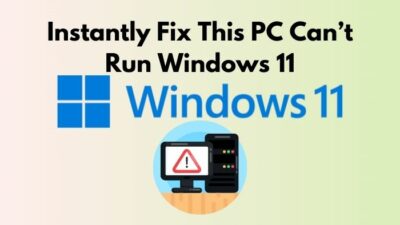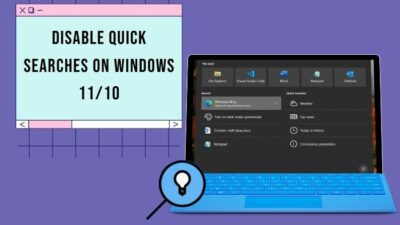While running your PC, you got a BSOD all of a sudden and other scenarios you could face, like you got kicked out of the game due to a RAM issue. These are the everyday incidents you may encounter when you have faulty RAM.
So, how to check whether RAM is functioning okay or not?
To get to the core RAM issues, you can use Windows Memory Diagnostic Tool (WDM) or MemTest86. Both are best in finding the RAM problem, whether it is a primary or advanced level issue.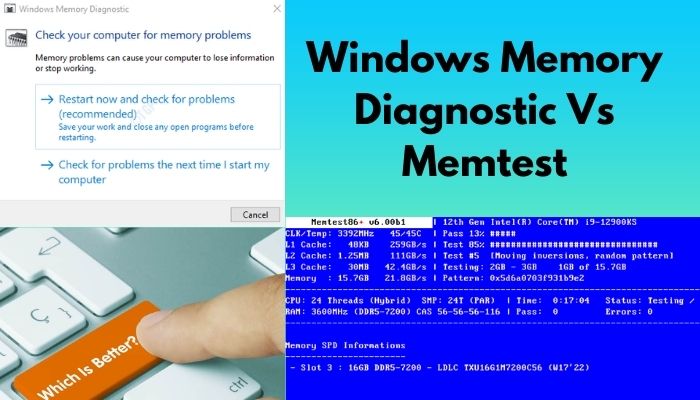
But which one is the better tool to test the RAM? Well, you can find out by reading this article till the end because I will bring up every aspect and functionality of these two RAM tester tools.
So, let’s get started without any further ado.
Why Do You Need to Test Your PC’s Ram?
When the PC doesn’t boot to the OS or boots several times after starting, you need to look for the RAM problem. Additionally, you may see error messages on the login screen or hear beep sounds for faulty RAM. Apps might crash, or BSOD can appear all of a sudden due to a problem in the RAM.
If the above is happening to your PC, you need to test your PC’s RAM asap. Those are the sign that the RAM has gone out of functionality.
RAM (Random Access Memory) is a crucial part of the entire PC system. Without an excellent working RAM, you may not do any work, and problems will occur now and then. Sometimes RAM’s incompatibility with the motherboard or not correctly installed RAM can cause issues too.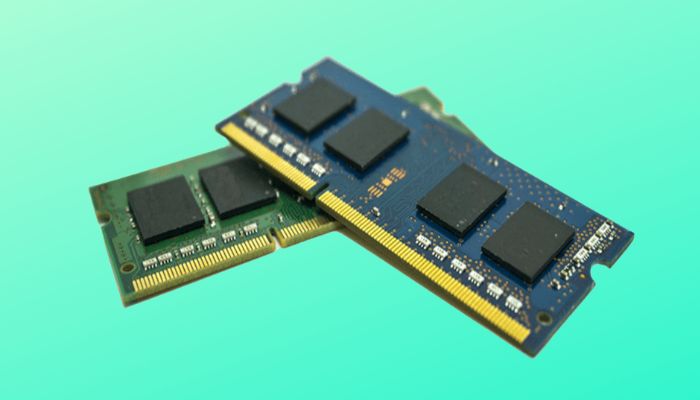
Due to overclocking, RAM might fail and cause BSOD. For this instance, you should test your RAM. Windows Memory Diagnostic is the perfect tool for testing the RAM, and it’s free too.
Just like the WDM tool, MemTest and MemTest86 also hold the top competitor position. Stick to this article because I will tell you which one is the best and why.
What is Windows Memory Diagnostic Tool?
Windows Memory Diagnostic (WDM) is a free memory/RAM tester tool from Microsoft, and it’s brilliant for testing your RAM. This tool will help you to dig out any problem while running the RAM at full potential.
It comes by default with the Windows OS, but you can download this tool, and it’s a small file.
Running this tool is super easy because it doesn’t need any user intervention and runs all the tests automatically. Though it has a Windows tag at the first of its name, it also supports Linux and other OS.
All you need to do is download the tool and run it. This app isn’t updated for a long time, but all the sturdy tests it runs are enough to locate the main problem with the RAM. The downside of this tool is it tests only the first 4GB of the RAM.
First, download the tool and create a bootable USB or ISO image for burning this tool into the USB flash drive/Disk. This tool runs six types of standard tests, and those are below.
Here are the tests that are run by Windows Memory Diagnostic tool:
- INVC
- LRAND
- MATS+ (cache enabled)
- WMATS+
- Stride6 (cache enabled)
- WINVC
This WMD tool also has an extended version which runs some extra tests along with the above.
Here are the additional tests which are included in the WDM extended version:
- MATS+ (cache disabled)
- WStride-6
- Stride38
- Stride6 (cache disabled)
- ERAND
Those are some complicated tests run by the WDM tool, but there is no need to learn about those tests in detail.
How to Run Windows Memory Diagnostic Tool
Running Windows Memory Diagnostic tool is quite an easy task to perform. There are two methods to run this utility, one is directly from the system, and the other is from a bootable pendrive or flash drive. Let’s check them out one by one.
Run Windows Memory Diagnostic Tool from Windows OS
When you can boot into your Windows OS, you can test your RAM with this tool easily. Below are the steps to run this tool from Windows search.
Here are the steps to run Windows Memory Diagnostic tool from the OS:
- Click on the Windows search icon and search for Windows Memory Diagnostic.
- Click on the app or click on the Open button.
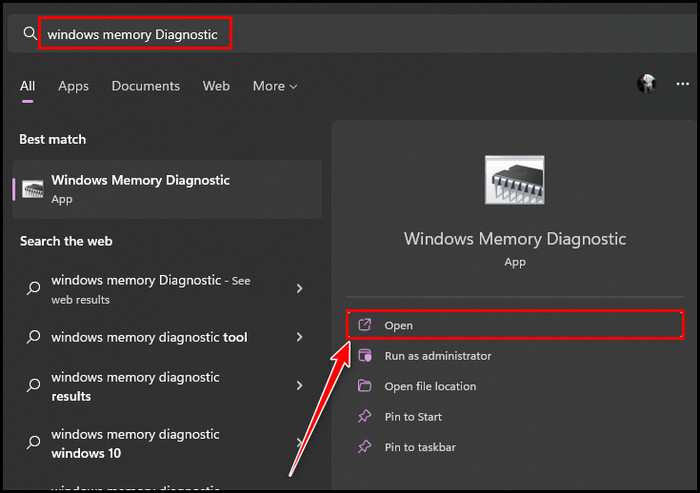
Select the Restart now and check for problems option from the pop-up box.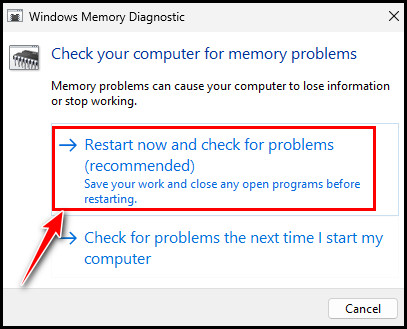 After clicking on this option, your PC will restart, and the WDM test screen will appear. You will find a progress bar and status that includes error results if found.
After clicking on this option, your PC will restart, and the WDM test screen will appear. You will find a progress bar and status that includes error results if found.
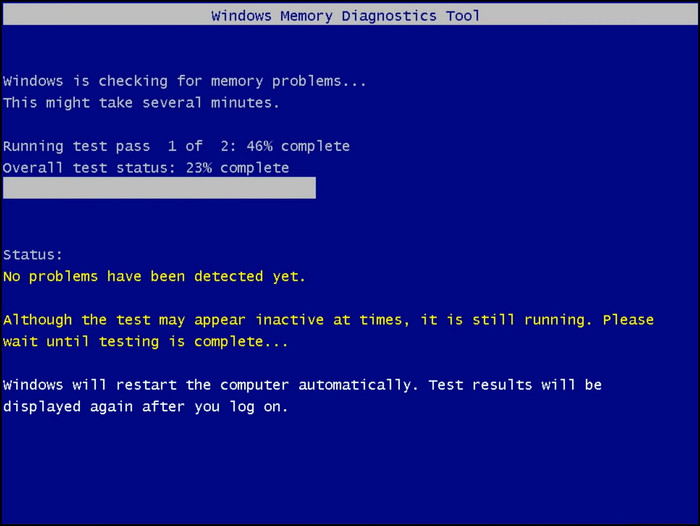 NOTE: While running this testing, you won’t be able to use the Computer.
NOTE: While running this testing, you won’t be able to use the Computer.
After the testing is done, the PC will boot to the Windows OS again with the test results. Don’t worry if it failed to provide you with the test result. You can manually find and view it.
Here are the steps to find Windows Memory Diagnostic test result from Event Viewer:
- Press Win key + X and click on the Event Viewer to launch it.

- Click on the Windows Logs side expand arrow button.
- Select the System and click on the Find option from the right pane.
- Type MemoryDiagnostic in it and click on Find Next button.
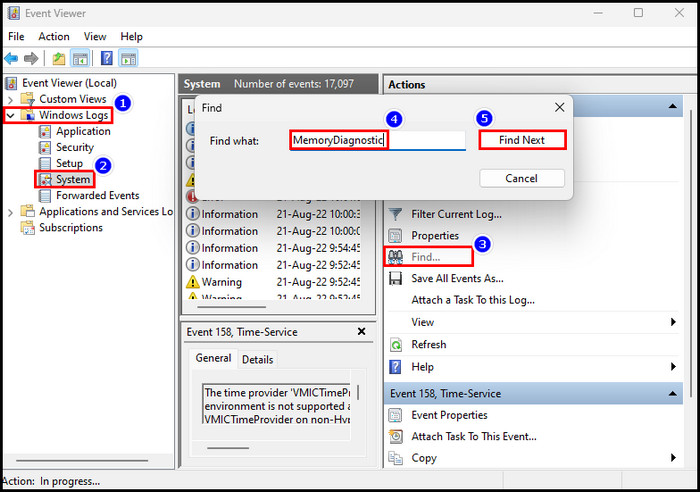
- Check the test result from the bottom of the Window.
After this, you can solve the RAM issue according to the scanned test result.
Run Windows Memory Diagnostic Tool from Other OS
You can run the WDM tool from other OS, including Linux. Another purpose of this method is you can run this utility if you don’t have access to your PC due to an issue. For this instance, you can run this tool to check for RAM issues.
To run this tool on another OS or a malfunctioned computer, you must first download this Windows Memory Diagnostic tool on a bootable USB drive.
Here are the methods to run Windows Memory Diagnostic tool from other OS:
- Download this WDM tool on a working PC.
- Double-click on mtinst.exe file from the downloaded folder.
- Click on the Accept button and then Save CD Image to Disk.
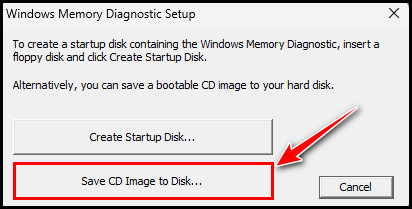
- Save the windiag.iso file to the desktop and click on the OK button.
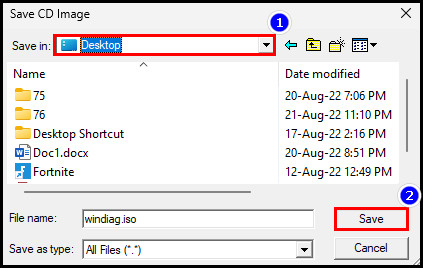
- Brun the windiag.iso file to a flash drive.
- Plugin the flash drive into the PC from which you want to run the test.
- Turn on the PC and press the boot menu key.
- Select the booted flash drive, and the WDM will run all the tests automatically.
You will find a progress bar with a status section. In the status section, you will see the result with the actual issue in the RAM.
What is Memtest?
MemTest is a RAM testing software that passes several tests on the RAM and finds errors. MemTest is developed by HCI Design. MemTest comes with a free version and two paid versions.
Pro and Delux are paid versions, but you can only test the entire RAM with the Delux version.
You can run the Delux version from a bootable CD or pen drive. That’s why it can test RAM without any hesitations. But with the Free and Pro versions, you can only test available RAM while the System is running.
MemTest only tests the unused amount of RAM rather than the total amount of RAM in the system. This tool will check all the RAM not used by other apps. Though you want more control, you can use the Windows Task Manager to figure out how much RAM is free.
How to Run MemTest
Running MemTest is a bit different than running the WMD tool. You will need to determine how much RAM is available in the system first. Suppose you have 8GB of RAM available, and you can run multiple tests simultaneously by splitting the amount of available RAM.
Here are the steps to run MemTest:
- Download the MemTest from the official Website.
- Unzip the files and double-click to launch memtest.exe
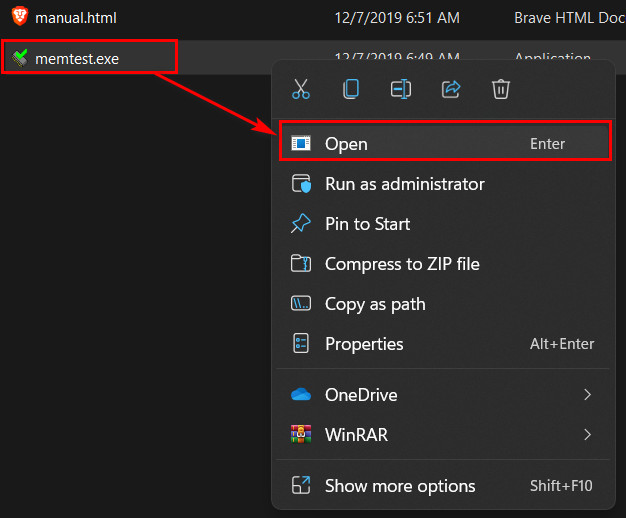
- Press Ctrl + Shift + Esc to open Windows Task Manager.
- Click on the Performance tab and select Memory.
- Look for unused RAM from the Available section.
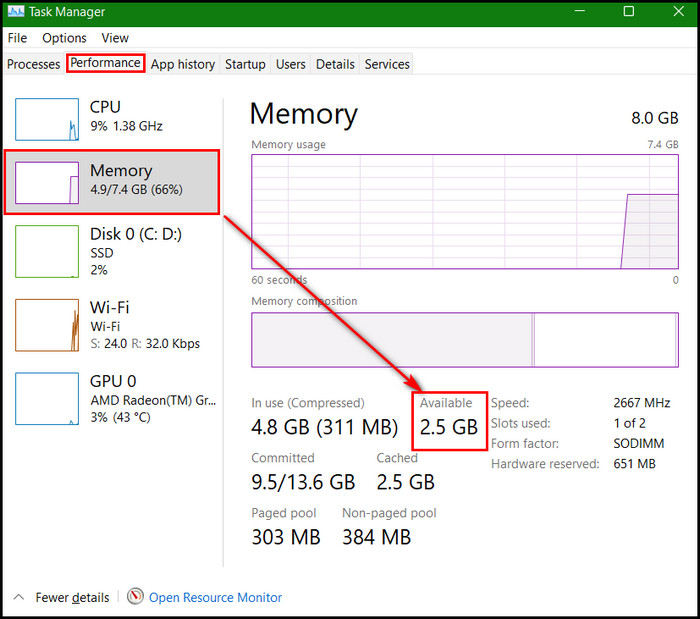
- Enter how much RAM you want to test in MemTest Enter megabytes of RAM to test, Convert gigabyte to megabyte, then put it in the box.
- Click on the Start Testing button.
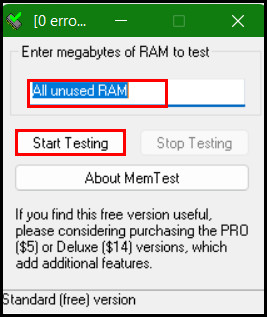
You can run tests on all unused RAM or several tests simultaneously; just make sure how much RAM you want to test separately. Assume you have 2GB of available RAM. To perform a separate test, launch MemTest.exe first and input 1000MB in the Enter megabytes of RAM to the test box. Click on the Start Testing button.
Clicking on that exe file again will launch the MemTest again in the same UI. Now, you will have two MemTest UI. Input 1000MB in the box again and click on the Start Testing button.
Well, how long to perform the test?
According to MemTest, running the test at about 100% will catch all the intermittent problems but not all. They suggested running it at about 400% to dig out all the major issues. About 60% of bad RAM will detect after running the test at about 10%.
What is Memtest86?
MemTest86 is a product of PassMark, and it is more powerful and supports 13 different RAM testing algorithms. They designed it for both x86, x86-64, and ARM-based computers.
You can test different types of RAM with this tool, such as DDR2, DDR3, DDR4, XMP, ECC, OR SODIMM.
Microsoft supports this tool, and they signed this tool because this app is secure boot certified. Both 32-bit and 64-bit computers support this tool along with Windows 10, 8, 7, Linux, and Intel x86- base Mac devices.
You can run this app as a background process and halt the process when needed. This MemTes86 can scan up to 64 GB of RAM. All you need to do is download the Zip version of this tool and make a bootable USB with this tool. Next, burn the MemTest86 files into it.
How to Run MemTest86
Running MemTest or MemTest86 is only possible from a bootable USB or flash drive. MemTest86 Pro is a paid version of MemTest86 and is more powerful. But most users and professionals use MemTest86 instead of MemTest86 Pro because this tool is enough for all the RAM testing.
All you need to do is download the MemTest86 from the official website and burn the download file into a bootable USB drive. All the latest versions of MemTest86 can only boot from a USB drive.
NOTE: To run this MemTest86 tool from a CD/DVD, you will need to download the 7.5 version or earlier one.
Here are the steps to run MemTest86:
- Go to the official website of Memtest86.
- Click on the DOWNLOAD button to download the app. It will take you to the download page.

- Click on Download MemTest86 Free (Version x.x build xxx), and a zip file will start downloading.
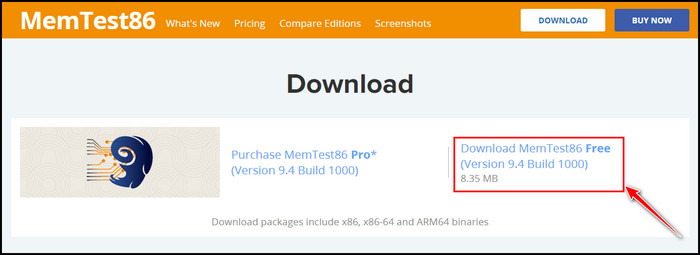
- Plugin the USB drive into the PC in which you want to burn the MemTest files.
- Unzip the file and double-click on the ImageUSB.exe file.
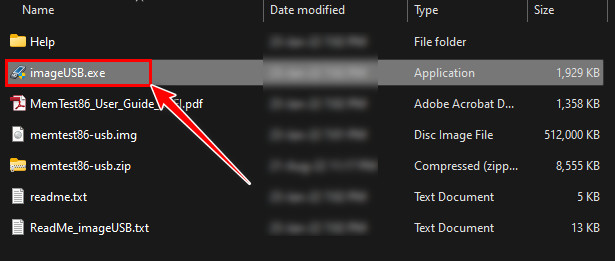
- Check the box to select the USB drive under Step 1: Select the USB drives(s) to be processed section.
- Leave Step 2’s selected section as it is.
- Click on the Browse button and select the memtest86-usb.img file from the extracted folder. (The Image file will be selected automatically by the app)
- Click on the Write button from the Step 4 section.
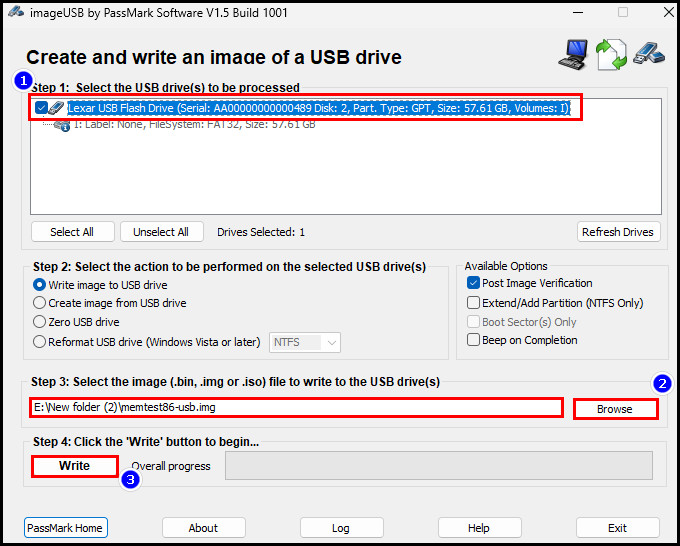
- Click on the OK button from the Imaging Completed! message box.
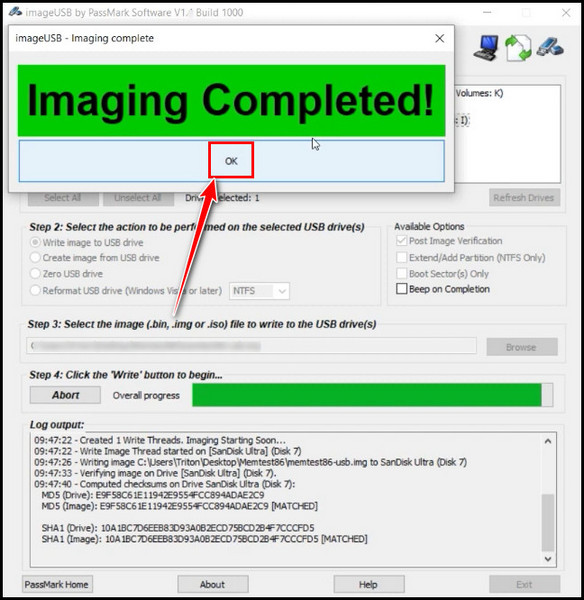
After that, close everything and reboot your PC. Press the Boot menu key while booting up and select the booted USB drive. The MemTest86 RAM testing screen will appear, and the test will begin.
You will find the Pass and Test percentage section. Moreover, you will also see the test address of the memory and test pattern. A total of 13 individual tests will run, and some memory problems will occur while running all the tests.
You will see the result in the blank section under the Time section when a problem is found. If you found any issue with the RAM, remove one RAM when you have two and run the test for individual RAM. 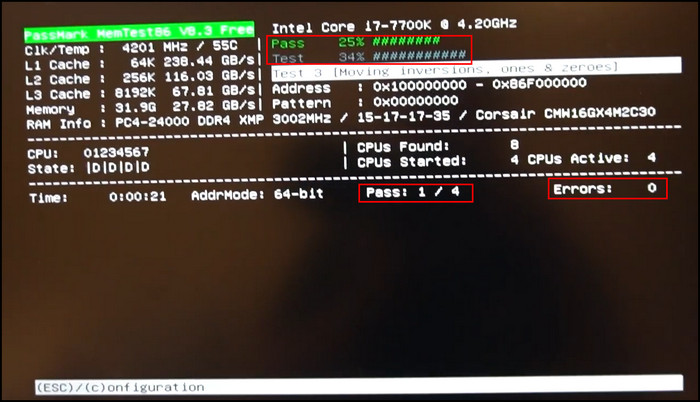
Running the test for individual RAM will help you to identify the faulty one. Resolve the problem if possible or replace the RAM.
WMD Vs. MemTest Vs. MemTest86: Which One is the Winner?
Windows Memory Diagnostic (WMD) is a free tool by Microsoft, and it got covers everything you need. Moreover, it comes by default with Windows OS. It runs all the tests while booting up, and that’s why it can test the entire RAM.
The downside is WMD can scan the first 4 GB at the beginning. Some users experience that the WMD tool hangs when it reaches 20-22%. To get the best result, you must switch to the extended mode.
In contrast, the MemTest tool has both free and paid versions. But, with the free variant, you can run only some selected tests. You will need the Pro or Delux version to run all the tests. The Delux version only runs tests on the entire RAM while booting up. No other version does that.
The Down of MemTest is you will need to run all the tests separately if you have lots of available RAMs. You will need $14 to buy the Delux version to run tests on the entire RAM.
On the other hand, MemTest86 is a stand-alone RAM testing app. It will run all the tests from a bootable USB drive and can perform while booting up. The scanning results are more accurate than other tools. This tool won’t hang or crash, just like WMD. In Addition, it can test up to 64GB of RAM.
The MemTest86 Pro can run twice the number of tests compared to its free version. This tool is widely used now by many professionals and novices.
So, according to the point of view, not Windows Memory Diagnostic or MemTest, the winner of the RAM testing tool is MemTest86 because it surpasses all the other apps in every aspect.
FAQs
Is the Windows Memory Diagnostic tool reliable?
Windows Memory Diagnostic tool is a free tool by Microsoft, and it’s very easy to use. It will run all the comprehensive tests. In contrast, BIOS also run memory test during POST, but those are extremely basic tests.
How good is MemTest86?
MemTest is also a free memory test tool, but it’s the best one available right now. It only requires a USB flash drive to run the MemTest utility. Both novices and pro technicians use this memory tester app for accurate memory diagnostics.
How to run a test to identify faulty RAM?
You can identify faulty RAM by running a memory testing utility. Tools like MemTest86 or Windows Memory Diagnostic will help you to run full memory diagnostic tests. Both tools can pass at least 13 different tests to the RAM.
Final Words
The Windows Memory Diagnostic and MemTest86/MemTest tools are enough to test the RAM. These two free tools can compete with the other paid memory testing tools.
These two softwares have several advanced options available, but those are only for professionals. You don’t need to use those advanced options for standard and RAM tests.
I hope you have read till the end and found your desired RAM testing tool. Please follow the steps carefully or ask for expert help.
So, which memory testing tool are you going to use? Let me know in the comment box.
Spend some time testing your RAM now, or spend more money later buying one!


